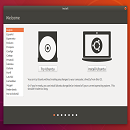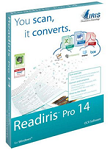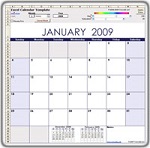PrimoPDF - Convert Text files to PDF
PDF format with many advantages, especially the ability to keep the correct format when opened on any computer with an installation program to read it. If available the text file and want to convert to PDF format, you can use a free tool PrimoPDF.
PrimoPDF is a basic yet powerful application that revolutionizes PDF file creation. You can construct perfect PDF files using the straightforward drag-and-drop tool this application offers.
Valuable toolkit: PrimoPDF creates all types of files in standard PDF format faster than competitors, making it one of the best free applications we've tried. The custom settings give you the ability to lock files and determine design specifications, so files will be exactly as you want them.
Fast, precise operation: We converted various file formats with PrimoPDF, and our PDFs were created within seconds, no matter the size or type of file. No instance of lessened image quality was observed either.
Cons
Dysfunctional support: PrimoPDF comes with an excellent user guide; however, many of the support links we clicked on were either broken or redirected us elsewhere. We only found the user guide and other assistance via Internet search.
Substandard design: We quickly noticed that nearly half of Primo's program window is consumed by advertisements for other software. This is understandable because it is a free application, but it complicates and detracts from the overall experience, nonetheless.
Bottom Line
PrimoPDF is an awesome, easy-to-use application for quickly creating PDF files. Including a larger, more robust GUI would make using PrimoPDF a tad easier, but there really isn't much that needs changing with this application. We highly suggest you use Primo if you need to create a PDF file; it's fast, reliable, and uncomplicated.
MORE INFORMATION ABOUT PRIMOPDF
Virtual printer settings for PrimoPDF
After successful installation, the printer list appears to add a virtual printer called PrimoPDF. It will automatically be set to the printer priority is used, but if it's necessary to use the printer to print or choose PrimoPDF as the default printer, then you go to Start > select Devices and Printers > press right-click the printer name to be used as default> select set as default printer .
Once you've set your default printer PrimoPDF is it in any program that supports printing, you click Print to print, immediately implement the program PrimoPDF will create a PDF file from your document to be printed.

Select PrimoPDF is the default printer for the machine
Alternatively, you can change the settings on the page number on each page when creating PDF documents by choosing Printing preferences on the menu when right-clicking the icon PrimoPDF printer from the list of devices.
On the window that appears, choose the number of pages you want to set in section Pages per Sheet . Next, click on Advanced ... , then set the following additional parameters as needed: Paper Size (text page size, default is selected A4 page), Copy Count (number of files will be created), Print quality (level of detail and clarity of the characters, the index higher the dpi quality).
Using PrimoPDF to create PDF
To create a PDF from the programs that support printing, you simply choose the print function of the program, then press the confirm button to print according to each program that you may have to press button OK or Print.
Then, the program PrimoPDF interface will appear, click Create to create PDF files right or to the data are.Before implementing the program PDF creation will require you to select where to save, you specify the desired folder and file name in the File Name box, then click Save .
Additionally, PrimoPDF also support you to quickly create PDF files from text files available. The operation is simple and fast, you simply drag - drop text file on the icon called PrimoPDF - Drop Files Here to Convert!PrimoPDF software on the screen. Immediately, the program supports open source text file is activated, then print mode will automatically operate to the corresponding PDF file at the folder containing the original file.






 Powerpoint 2016 Pro 64bit
1,529
Powerpoint 2016 Pro 64bit
1,529
 Excel 2016 (Pro 64bit)
1,617
Excel 2016 (Pro 64bit)
1,617
 Word 2016 (Pro 64bit)
2,475
Word 2016 (Pro 64bit)
2,475
 Adobe Reader 11.0.23
4,228
Adobe Reader 11.0.23
4,228
 Beginners Guide: How To Install Ubuntu
5,015
Beginners Guide: How To Install Ubuntu
5,015
 Debut Video Capture Software free downlad...
3,411
Debut Video Capture Software free downlad...
3,411
 Free online slideshow maker with music and...
4,187
Free online slideshow maker with music and...
4,187
 Dowload microsoft office 2010 professional...
6,879
Dowload microsoft office 2010 professional...
6,879
 Snipping Tool++ online - Free download...
20,884
Snipping Tool++ online - Free download...
20,884
 PDF Reader allows you to open and view any...
3,049
PDF Reader allows you to open and view any...
3,049
 Microsoft word 2010 is installes on...
2,780
Microsoft word 2010 is installes on...
2,780
 Microsoft office 2010 debuted a collection...
4,873
Microsoft office 2010 debuted a collection...
4,873
 Microsoft Office 2011 home, business...
4,783
Microsoft Office 2011 home, business...
4,783
 Microsoft Office 2013 Professional Plus...
6,455
Microsoft Office 2013 Professional Plus...
6,455
 Foxit Reader 7.3.4.0311 - Read, edit and...
2,970
Foxit Reader 7.3.4.0311 - Read, edit and...
2,970
 Adobe Reader XI 11.0.10 - Tools best PDF...
3,437
Adobe Reader XI 11.0.10 - Tools best PDF...
3,437
 Free Webcam Recorder - Free download and...
2,519
Free Webcam Recorder - Free download and...
2,519
 Readiris Pro - Free download and software...
2,887
Readiris Pro - Free download and software...
2,887
 Gantt Chart Template for Excel - Free...
3,954
Gantt Chart Template for Excel - Free...
3,954
 Universal Document Converter - Free download...
2,750
Universal Document Converter - Free download...
2,750
 Google Chrome Free Download
166849
Google Chrome Free Download
166849
 MathType 6.9a - Software to create...
79631
MathType 6.9a - Software to create...
79631
 Zalo for PC
29572
Zalo for PC
29572
 Beach Head 2002 - Game shoot tank attractive...
25753
Beach Head 2002 - Game shoot tank attractive...
25753
 iBackupBot - Free download and software...
22612
iBackupBot - Free download and software...
22612
 AnonymoX 2.0.2 - Add-on supports access...
22197
AnonymoX 2.0.2 - Add-on supports access...
22197
 Age of Empires 1.0
17065
Age of Empires 1.0
17065
 Realtek AC97 Audio Codec Driver A4.06 -...
16528
Realtek AC97 Audio Codec Driver A4.06 -...
16528
 Citrio 50.0.2661.271 - Smart Web Browser -...
14568
Citrio 50.0.2661.271 - Smart Web Browser -...
14568